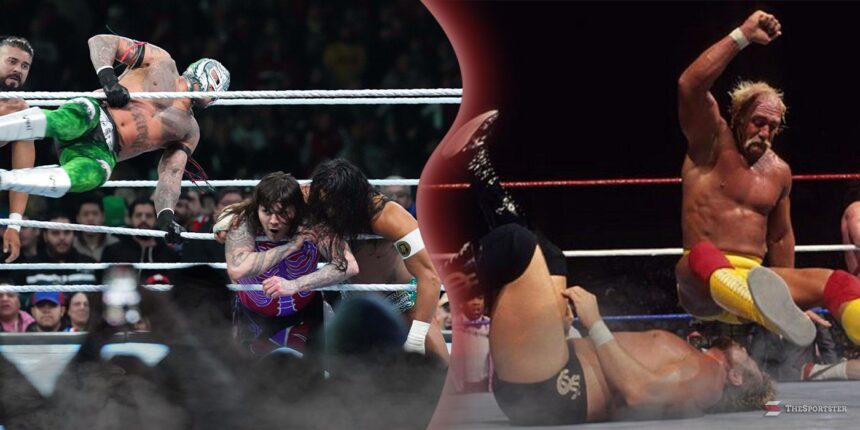In theory, a wrestler’s finisher move should be the most dependable weapon in their arsenal, designed to wrap up the match after a well-executed strategy. However, in WWE, this isn’t always the case. The essence of professional wrestling lies in entertainment, and some finishing moves become iconic more for their connection with the audience than their impact. Several finishers have become legendary over the years despite not appearing overly devastating.
Take Scotty 2 Hotty’s “Worm,” for example—a move that gained massive fan engagement during WWE’s peak year in 2000 thanks to Scotty’s playful setup and dancing before delivering a chest chop. Hulk Hogan’s leg drop, though not visually catastrophic, remained powerful because of his legendary status, even if the move seemed to hurt him more than his opponents. Rey Mysterio’s “619” is a signature move that requires a lengthy setup and has thrilled fans through numerous high-profile matches, despite opponents often escaping it.
Mick Foley and Bray Wyatt’s use of the Mandible Claw capitalized on its creepy effect, making it memorable rather than deadly. Dolph Ziggler’s Zig Zag, though less effective than some finishers, helped him secure a world title before he shifted to using a superkick. The Rock’s “People’s Elbow” turned a goofy move into an unforgettable spectacle, proving that charisma can elevate any finisher. Trish Stratus’ “Stratusfaction” required cooperation from her opponents, underscoring the teamwork involved in wrestling storytelling.
Rikishi’s “Stinkface” may not have been his finisher, but it was a fan favorite due to its unique entertainment value. John Cena’s “Attitude Adjustment”—originally “FU”—may not appear most destructive, especially against larger opponents, but Cena’s accomplishments have made it iconic. Meanwhile, The Rock’s “Rock Bottom” looked more brutal than the People’s Elbow and was consistently used to finish matches against top-tier competitors, boosted by his immense charisma.
Fan Take: These finisher moves highlight the blend of storytelling, character work, and fan engagement that makes WWE so captivating. It’s a reminder for fans that in wrestling, sometimes the personality behind the move matters as much as the move itself, shaping the legacy of both the wrestler and the sport.













